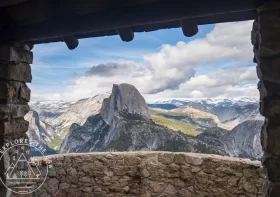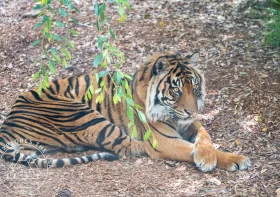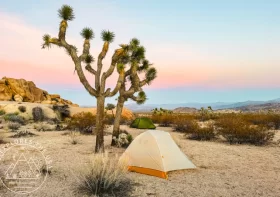Where Are The Famous Death Valley Mud Cracks
DISCLOSURE: This post may contain affiliate links. If you purchase after clicking one of my links, I may earn a small commission at no extra cost to you. As an Amazon Associate, I earn from qualifying purchases. For more information, see my disclaimer.
Whenever I am in Death Valley National Park, one of my favorite adventures is to look for mud cracks. I cannot express how accomplished I felt the first time I found some, and also a tad silly for not noticing them sooner! So in this article, I’ll share some of the Death Valley mud cracks I captured over the last few years and give you tips on where you can find some too.
About Death Valley National Park
Nestled within the vast expanse of the Mojave Desert, Death Valley National Park stands as a mesmerizing testament to the raw beauty and extremes of nature. Renowned as the hottest and driest national park in the United States, Death Valley captivates visitors with its otherworldly landscapes.
From the iconic Badwater Basin, the lowest point in North America, to the towering Panamint Range that frames the horizon, every inch of Death Valley tells a story carved by geological forces and the passage of time. Mesquite Flat Sand Dunes shimmer in the sunlight, offering a surreal spectacle against the backdrop of rugged mountains. Visitors can witness the vibrant hues of Artist’s Palette and marvel at the rugged canyons and ghostly remnants of historic mining operations.
Despite its ominous name, Death Valley thrives with life, featuring unique flora and fauna adapted to the harsh desert environment. A journey through Death Valley National Park is a profound exploration of resilience, stark beauty, and the unparalleled wonders shaped by the forces of nature.
Where to stay in Death Valley
1. Hotels near Furnace Creek
There are two hotel options within Death Valley National Park at Furnace Creek:
While I usually camp when visiting, I’ve stayed at both hotels multiple times and highly recommend them. The Ranch offers a more budget-friendly stay, while The Inn provides a more upscale experience. Both feature swimming pools and on-site restaurants, but The Inn adds a special touch by offering guests golf carts to get to their rooms, something that’s surprisingly fun to drive around. I wouldn’t hesitate to stay at either hotel again on future trips.
2. Camping in Death Valley
There are many campgrounds to choose from in Death Valley, whether you seek developed or primitive options. I have stayed at many of the developed campgrounds, and I’ve always had a great experience there. I don’t think you can go wrong with any of them.
3. Rentals near Death Valley
Discover the perfect getaway with VRBO by exploring vacation rentals near Death Valley National Park. Whether you’re planning a family trip, a group adventure, or a solo escape, VRBO offers a variety of accommodations to suit your needs. Enjoy amenities like WiFi, pools, and fully equipped kitchens, ensuring a comfortable stay in this stunning desert region. You’ll also find pet-friendly, non-smoking, and accessible options, making it easy to find the ideal rental for your journey. With VRBO, your Death Valley experience can be as relaxing or adventurous as you wish.
What Are Mud Cracks?
Mudcracks are sedimentary structures that form in muddy sediment as it dries and contracts. They are most commonly found in mudstones, but can also be seen in other sedimentary rocks such as sandstones and shales.
The cracks form when the mud is exposed to drying conditions, such as those found during droughts or seasonal changes. The contraction of the mud causes cracks to form, with each crack running perpendicular to the direction of drying. These cracks may range from a few millimeters to several centimeters in size and can be preserved for millions of years if they are buried quickly enough by subsequent deposits.
Mudcracks can provide important information about past environments and can help geologists understand ancient climates and landscapes. They are found in many places around Death Valley National Park, and this video shows some I found alongside the road in September 2021, just a few miles away from Furnace Creek.
Recommended Gear
DVNP Map
#1 Best Seller! This waterproof topographic map has an entire UTM grid printed on the map to aid with GPS navigation, and it’s also tear-resistant!
America the Beautiful Pass
Good for a year’s worth of visits, the annual America the Beautiful Pass is your ticket to more than 2,000 federal recreation sites across the country, including all our national parks.

DVNP Day Hikes Map
This map contains detailed maps for 18 of Death Valley’s finest day hikes (well-known hikes and a few off-the-beaten-path trails!)
Garmin inReach Mini 2
Home is closer than you think with Garmin inReach Mini 2. At just 3.5 oz., this compact satellite communicator adds peace of mind to your adventures without adding weight to your pack.

Garmin GPSMAP 67i Review & InReach Device Comparison
Review of the Garmin GPSMAP 67i and comparison to the GPSMAP 66i, Mini 2 and InReach Messenger plus[…]…
Recommended Death Valley Experiences
Death Valley offers some of the most awe-inspiring landscapes in the world, and experiencing it up close is something you’ll never forget. Whether you’re looking for a guided adventure through the valley’s iconic sites or prefer the freedom of a self-guided exploration, there’s an option for every traveler. Enjoy a private full-day tour to dive deep into the park’s natural wonders, or take advantage of self-driving tours with easy-to-follow audio guides, perfect for exploring at your own pace.
For those seeking more variety, you can even explore bundled tours that span over 30 national parks, making it easy to immerse yourself in the beauty of the American West. Whatever experience you choose, Death Valley is waiting to be discovered in ways that will leave you breathless.
Death Valley Mud Cracks Photo Gallery
Furnace Creek
Drive slowly around Furnace Creek, keep your eyes open, and be mindful of your surroundings. These are very easy to find and access near where one might sleep.
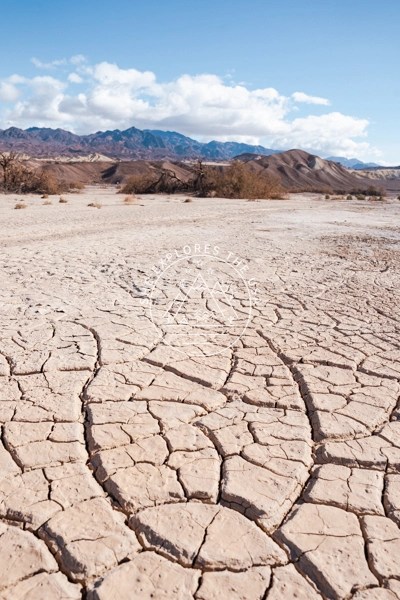


A few miles away from Furnace Creek
I found these near a popular trailhead a few miles from Furnace Creek and they are worth the hunt.

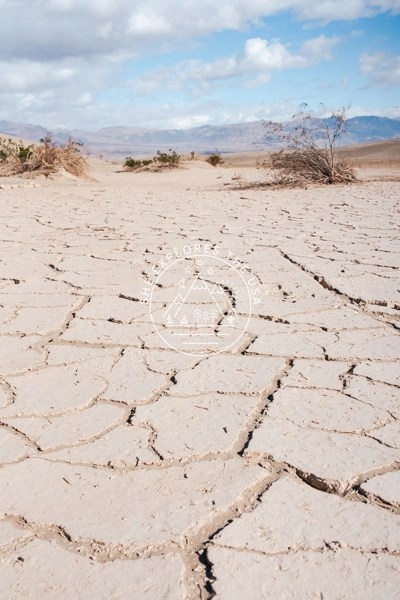



Edit in January 2024: I just got back from another trip to Death Valley and there are plenty of mud cracks to be found!! Drive slow and look at your surroundings! This video was filmed on January 19, 2024!
Stovepipe Wells Area
Watch out for mud cracks around Stovepipe Wells. I had not thought about seeing mud cracks near where I found these, so finding them gave me such a burst of energy.



Further afield in a very remote area
I’ll soon write a post about my adventure to Racetrack Playa. But in the meantime, here are a few photos I took when I went there in September 2021.
***Use extreme caution***
The Racetrack Valley Road was impacted by flood damage in the summer of 2022 and 2023! This road is Native or Dirt and typically only recommended for High Clearance 4 Wheel Drive Vehicles.
I rented a 4×4 from Farabee Jeeps to go there, and I would highly recommend them.

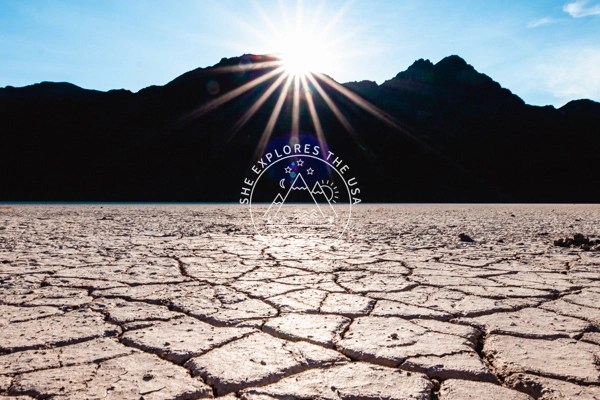

Tips For Finding Death Valley Mud Cracks
Finding mud cracks can be a fun and exciting adventure, but it requires some knowledge of where to look. However, if I gave you the GPS locations where I found mine, I would take away 90% of your fun. In addition, they are not always in the same place. The deepest ones I’ve found so far were right on the side of a road on September 8, 2021 (check out this YouTube video), but they were not there anymore when I returned to the park a few months later. So, GPS coordinates would not necessarily help you anyway.
With that in mind, here are some tips for finding mud cracks instead:
- Drive slowly enough to be able to see cleaned-up traces of mud on the road.
- Pay attention to road signs as you drive through the park. Wherever you see flash flood signs will usually be a clue that mud cracks may have formed nearby. Park safely alongside the road and explore around.
- Look for flat areas where water has recently receded because this could be another spot where you may find dried-up mud with visible cracking patterns.
- If you see cars parked at seemingly random deserted places alongside the road, stop by also to see if there are cracks around. Most often, where they parked is NOT random and you’ll see cracks within walking distance. Worth a try!
- when you do find mud cracks, be sure to practice Leave No Trace and leave them as they are, so others can enjoy seeing them too!
With these tips, you should be able to find some interesting examples of mud cracks! Just pay attention to your surroundings, some are very accessible to anyone.
Were you able to find some? Let me know in the comments below when you return from your trip!
FAQ about Mud Cracks in Death Valley
What are mud cracks, and how do they form?
Mud cracks are patterns that form when wet, muddy ground dries out and contracts. They can be preserved for millions of years if buried quickly. In Death Valley, they’re common after flash floods or seasonal water drying.
Where can I find mud cracks in Death Valley?
Some of the easiest-to-spot mud cracks are near Furnace Creek, Stovepipe Wells, and even on the sides of the road if you’re observant. Flash flood signs and dried flat areas are great clues. Just drive slowly and explore carefully.
Are mud cracks always in the same place?
No! Mud cracks appear and disappear depending on recent weather, water flow, and sediment movement. The same spot may be full of cracks one year and empty the next, so every trip offers a new surprise.
Do I need GPS coordinates to find them?
Nope, and part of the fun is in the hunt! The joy of finding them yourself is part of the experience. They often appear near flat areas, flood zones, and roadside pull-offs. Use visual clues, not maps.
What gear should I bring to find mud cracks?
Bring sun protection, lots of water, and a good map of Death Valley. I also recommend a Garmin inReach device for remote safety, and a topographic or day hikes map if you’re venturing beyond paved areas.
Can I walk on or touch the mud cracks?
It’s best to practice Leave No Trace. These formations are fragile and beautiful; walking on them can damage them permanently. Take pictures, not pieces!
Is it safe to drive to remote areas like Racetrack Playa to find mud cracks?
Racetrack Valley Road is very remote and requires a high-clearance 4WD. Use caution and rent a proper vehicle if needed. Farabee Jeeps is a great local option. Always check road conditions before attempting this drive.
Final Thoughts on Death Valley Mud Cracks
Mud cracks may not be the park’s most famous attraction, but they’re one of my absolute favorites. There’s something magical about finding these quiet, often-overlooked features, little reminders of nature’s artistry and time’s passage.
Each visit offers a different experience. Sometimes you’ll stumble upon giant, deep cracks just feet from the road; other times, you’ll search and search, only to discover them tucked into unexpected corners of the desert.
Whether you’re a first-time visitor or a seasoned Death Valley adventurer, I encourage you to slow down, pay attention to your surroundings, and enjoy the thrill of the search. Let the desert surprise you.
And when you do find some mud cracks, don’t forget to take a photo, and please share your experience in the comments. I’d love to know what you discovered on your journey!
Post originally published on March 2, 2023, and last updated on December 7, 2025.





